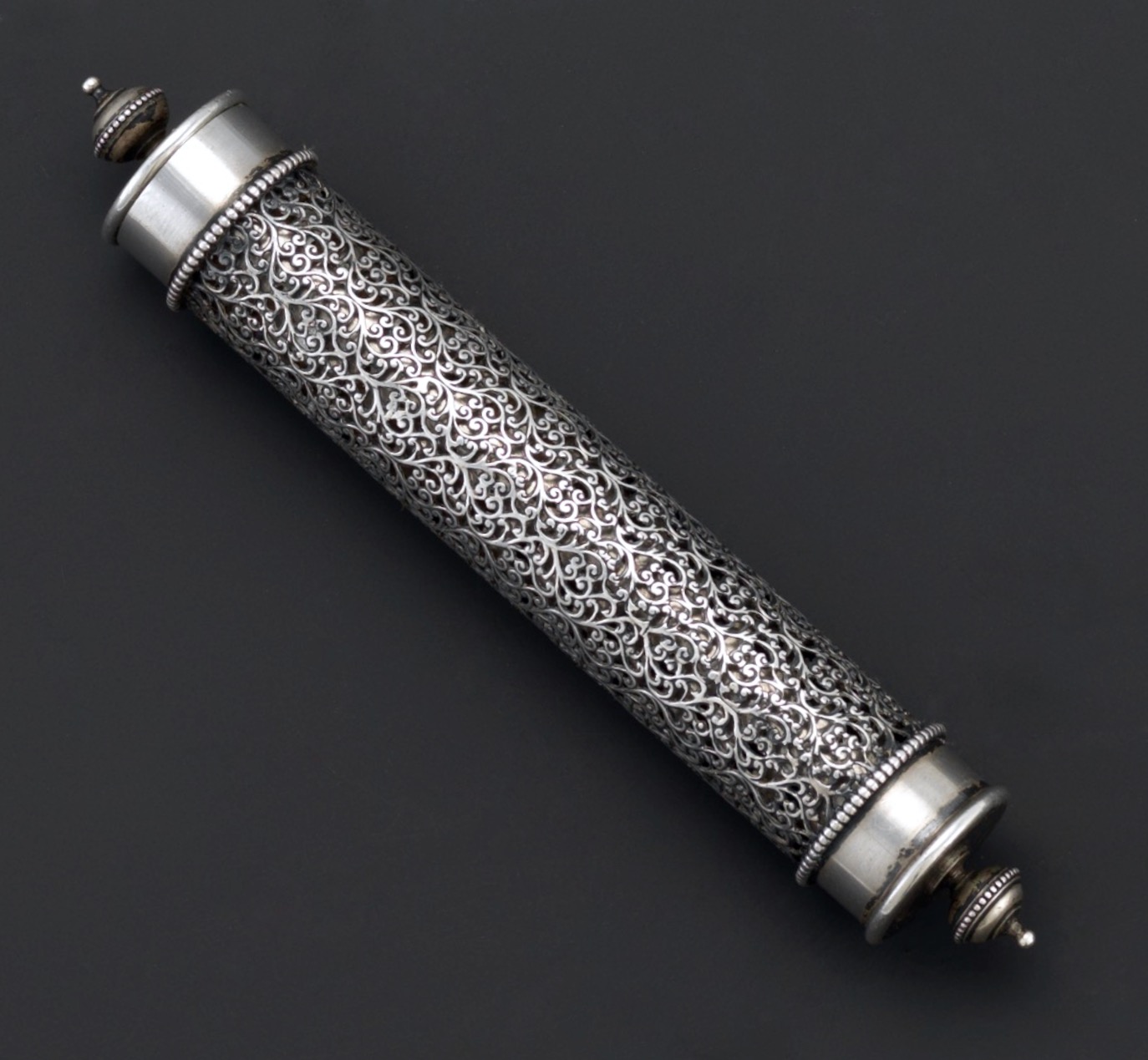

Title: Gorham Silver Scroll Box Pocket Purse Fragrant Perfume Vinaigrette
Shipping: $29.00
Artist: N/A
Period: 19th Century
History: Art
Origin: Northern Europe > England
Condition: Very Good
Item Date: 1889
Item ID: 326
A rear Gorham Sterling Vinaigrette, 19th Century 20 mm diameter x 119 mm long (4.685") A vinaigrette was originally a small silver box which contained a pad of compressed cotton soaked in a vinegar base concoction, used to revive a person who suffered an attack of the "vapours" A term which was used for a multitude of afflictions, including fainting, hysteria, and mania. A long list of maladies developed over thousands of years, with vapours as the suspected cause. In Victorian times the most frequent victims were women. No properly appointed Victorian home would not be without a fainting room and the specialized couch. This vinaigrette is complete departure from the original purpose. In the US such items were used with fragrant oils or perfumes. 19th century America had little zoning regulations. Stockyards and industry bordered growing cities. An unfavorable shift in wind could push foul air into the path of a ladies' carriage. The vinaigrette provided relief from the event. Usually carried in a pocket or handbag, and dependent upon design, it could enhance the personal ambrosia of the user. This vinaigrette is comprised of two interlocking cylinders. Resembling a scroll with the two end finials, the outer cylinder is pierced in a lace like pattern, allowing air to pass as in filigran silver work. The inner cylinder is pierced in alternating rows of "arrow" and "plaque" motif, retaining half of the original cotton wading. Stamped "patent 1889", "sterling 640", the normal lion/anchor/"G", with a lions head cartouche for 1891, the year of manufacture. Weighs 35.7 grams.less Condition: Good overall.
The vinaigrette was a most necessary adjunct to the toilette in the late eighteenth and early nineteenth centuries, when it was considered the correct thing for a lady to show symptoms of fainting on occasion. The little boxes with a grating inside—through which the essence contained in a saturated sponge could be inhaled— are of all sorts and conditions. Some are quite plain, others have delicately chased or monogrammed tops, or views engraved on the lids; others, again, are of fantastic shapes. The vinaigrette was the descendant of the old pomander, and the forerunner of the midVictorian smelling bottle; but whereas the vinaigrette is accessible to the most modest purse for a very small sum, the real old genuine pomander is very scarce indeed, and it means a lot of money to come by one at all. The pomander was round, and often of china, and contained a wonderfully strong-smelling ball, compounded of spices and pungent scents which could hardly fail to bring round the most upset of ladies.
Link: https://en.wikipedia.org/wiki/Gorham_Manufacturing_Company
Gorham Silver was founded in Providence, Rhode Island, 1831 by Jabez Gorham, a master craftsman, in partnership with Henry L. Webster. The firm's chief product was spoons of coin silver. The company also made thimbles, combs, jewelry, and other small items. In 1842, the Congress enacted a tariff which effectively blocked the importation of silverware from outside the United States, which aided the American silver industry. Jabez Gorham did not take full advantage of this opportunity, but in 1847 Jabez retired and his son, John Gorham succeeded him as head of the company.
John Gorham introduced mechanized production methods, enlarged the premises in downtown Providence, improved the designs, and expanded the product line. In 1852, Gorham toured many of Europe's silver workshops and manufacturers, speaking with individual specialists, including master craftsmen and toolmakers. He sought highly skilled foreign workmen to train his American workers and hired George Wilkinson, a premier designer and workshop manager, from England. In 1865, the Rhode Island legislature granted a charter in the name of Gorham Manufacturing Company and in 1890, the company relocated to a factory on Adelaide Avenue in Providence.
The nature of the wood being carved limits the scope of the carver in that wood is not equally stron